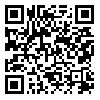BibTeX | RIS | EndNote | Medlars | ProCite | Reference Manager | RefWorks
Send citation to:
URL: http://www.iust.ac.ir/ijae/article-1-421-en.html
This paper mainly discusses the thermal behavior and performance of Lithium-ion batteries utilized in hybrid electric vehicles (HEVs), battery electric vehicles (BEVs) and fuel cell electric vehicles (FCEVs) based on numerical simulations. In this work, the battery’s thermal behavior is investigated at different C-rates and also contour plots of phase potential for both tabs and volume-monitored plot of maximum temperature inside the computational domain is illustrated. The numerical simulation is done via ANSYS Fluent traditional software package which utilizes the dual potential multi-scale multi-dimensional (MSMD) battery model to analyze the cell discharge behavior and investigate the thermal performance and potential variation(s). The results show that the maximum temperature of battery surface is proportional to the battery discharge rate, i.e., the higher the C-rate, the greater cell surface temperature. Moreover, an increasing symmetric pattern is noticed for volume monitor of maximum temperature over the simulation period. Finally, it is worth noting that the battery tab potential varies more quickly if the C-rate becomes greater. In fact, the lowest and highest rate of changes are observed for 1C and 4C, respectively.
| Rights and permissions | |
 | This work is licensed under a Creative Commons Attribution-NonCommercial 4.0 International License. |






